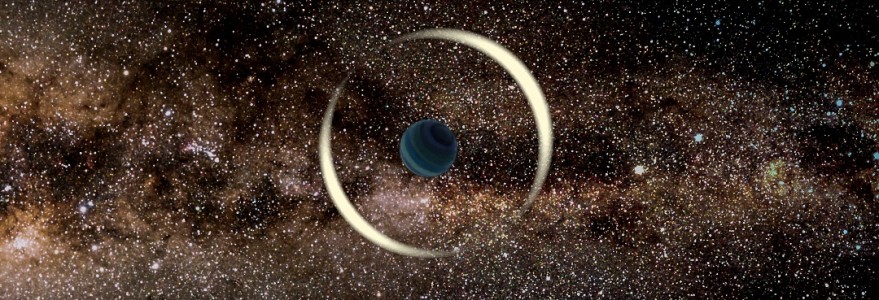Theories of planet formation predict the existence of free-floating planets that were ejected from their parent planetary systems and are floating alone through space. Astronomers from the Warsaw University Observatory have found two new rogue worlds. The discovery has been published in the journal “Astronomy & Astrophysics”.
As of now, almost 4,000 extrasolar planets have been detected and confirmed. There are many ways of finding exoplanets, but most of them rely on the detection of light of the host star. Astronomers can measure motion of the star in response to the gravity of its planet or detect short dimmings of the star when the planet blocks a portion of its light.
“These methods don’t work for planets without stars” – says Przemysław Mróz, a graduate student at Warsaw University Observatory and the lead author of the study. “Rogue planets do not emit any light and so they cannot be directly detected. We use a phenomenon called gravitational microlensing to search for free-floating planets.”
When a massive objects (a star or a planet) passes between an Earth-based observer and a distant source star, its gravity may deflect and focus light from the source. The observer will measure a short brightening of the source star, which is called a gravitational microlensing event.
The observed signal is independent of the brightness of the lens and so dark objects, such as planets, can be detected this way. Duration of microlensing events depends on the lens mass – the less massive the lens, the shorter the microlensing event. Most of the observed events, which typically last several days, are caused by stars. Microlensing events attributed to free-floating planets usually last barely a few hours.
It is impossible to directly measure the mass of the lens using only a timescale of a microlensing event. One has to additionally measure the relative velocity between the lens and source. “This is why we use the ‘Hollywood’ strategy” – says Mróz. “We follow up the biggest stars.”
Observations of giant stars allow astronomers to constrain masses of free-floating planets. Scientists used the ‘Hollywood’ strategy to study two microlensing events that were detected by the OGLE sky survey, which is led by the Astronomical Observatory of the University of Warsaw astronomers. One of the planets is among the smallest rogue worlds that have been found and is slightly more massive than Earth. The second event was likely caused by a Jupiter-mass object.
“These observations are consistent with our previous estimates that low-mass rogue planets are very common in the Milky Way” – says Prof. Andrzej Udalski, the Principal Investigator of the OGLE project. “We estimate there should be at least one free-floating planet per each star.”



